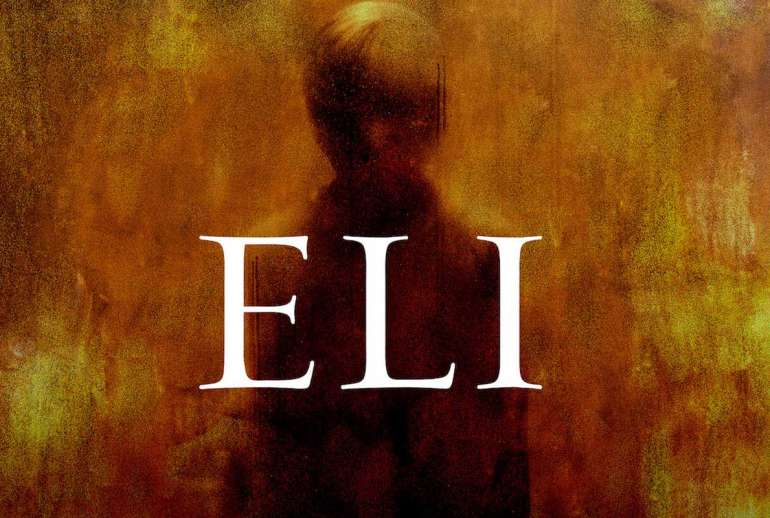The world’s most famous anonymous artist has struck again, but this time the mystery extends far beyond identity. Banksy’s latest work features a lighthouse with the haunting message “I want to be what you saw in me,” yet the location remains completely unknown. What makes this piece particularly intriguing is not just its emotional resonance, but the artistic dialogue it creates with other street artists who share the same wall space. The hunt is on for answers that may never come. Online detectives are scrambling to decode clues from Instagram posts that reveal frustratingly little about where this lighthouse actually stands. Could this be Banksy’s most enigmatic release yet, designed to keep us searching for something that was never meant to be found?
The Lighthouse Emerges from Digital Shadows
On Thursday evening, Banksy’s Instagram account lit up with images that would spark a global guessing game. The posts show a stark black and white lighthouse stenciled on a beige wall, its beam cutting through urban decay with surgical precision. The accompanying text, “I want to be what you saw in me,” transforms what could be simple street art into something approaching confession.
The lighthouse itself appears deliberately positioned to interact with its environment in ways that demonstrate Banksy’s continued mastery of site-specific installation. Its painted shadow connects to a metal bollard on the sidewalk, creating a visual bridge between art and infrastructure that transforms ordinary urban furniture into part of the artistic statement. This isn’t graffiti applied randomly to available wall space but calculated placement that makes the entire streetscape part of the work. The beam appears to shine directly onto the bollard, suggesting guidance or warning in equal measure. Such attention to environmental detail separates Banksy’s work from typical street art, creating compositions that feel inevitable rather than imposed. The lighthouse becomes part of the street’s architecture rather than simply decoration applied to its surface.
The images provide tantalizingly few geographical clues despite their careful composition. A wider shot shows two elderly people walking their dogs in what appears to be a tunnel or underpass, while another photograph captures a blurred figure on a scooter passing the artwork. These human elements add life to the composition but offer no definitive location markers that might satisfy the growing army of online detectives.
The Marseille Speculation
Social media detectives have focused their attention on Marseille, France, as the most likely location for this mysterious lighthouse. The southern French port city has become a natural candidate for several compelling reasons that extend beyond simple guesswork.
Marseille’s reputation as a street art haven, combined with its Mediterranean coastal setting that would make lighthouse imagery particularly resonant, creates a logical backdrop for Banksy’s latest intervention. The city’s connection to French street artist Invader, known for his pixelated video game-inspired murals, adds another layer of artistic context that supports the theory. Marseille has embraced street art as part of its cultural identity, making it the kind of environment where a Banksy piece might appear without immediate removal or destruction. The city’s port history and maritime culture would provide thematic resonance for lighthouse imagery. Yet this remains pure speculation based on visual analysis and cultural context rather than any confirmed evidence. No official confirmation has emerged, and Banksy’s Instagram posts provide no caption or location tag to settle the debate that continues to rage across social media platforms.
The Yaze Connection: Street Art’s International Language
Near the lighthouse, another artist’s tag appears that transforms this from a simple Banksy sighting into something more complex. The tag reads “Yaze” and belongs to Canadian street artist Marco The Polo, who has publicly cited Banksy as an inspiration on his Instagram account.
The presence of Yaze’s tag alongside Banksy’s work reveals the intricate web of influence and inspiration that defines contemporary street art in ways that traditional gallery exhibitions never could. Marco The Polo, who also goes by the name Yaze, represents a new generation of artists shaped by Banksy’s pioneering approach to anonymous, politically-charged public art. This creates a fascinating artistic dialogue between established and emerging voices in the medium that speaks to street art’s democratic nature. The connection runs deeper than coincidence, suggesting either planned collaboration or the kind of serendipitous convergence that makes street art communities so dynamic. Whether intentional or accidental, the juxtaposition demonstrates how street art creates its own international language, one where Canadian artists influenced by British legends can find their voices echoing in the same urban spaces. The fact that this connection was captured in the imagery circulating online, showing the blurred figure on a scooter near both artworks, suggests the organic nature of street art communities where artists respond to, build upon, and pay homage to the work that has shaped their own artistic vision.
Decoding the Message
The phrase “I want to be what you saw in me” carries emotional weight that extends far beyond typical Banksy political commentary. Some observers have traced the lyric to “Softly” by country band Lonestar, which includes the line “I want to be what you see in me. I want to love you the way that you love me.” This connection to popular music adds unexpected vulnerability to Banksy’s usually sharp-edged social criticism.
The lighthouse becomes a metaphor for guidance and hope, but also for the gap between perception and reality that defines human relationships. Lighthouses warn of danger while promising safe harbor, representing both isolation and connection as they stand alone while serving others. The timing feels significant given that this more introspective message arrives after Banksy’s recent series of animal-themed works across London, pieces that sparked widespread interpretation about everything from zoo conditions to urban wildlife displacement. The lighthouse represents a shift toward more personal territory, though wrapped in the same visual language that has made Banksy’s work instantly recognizable worldwide. This evolution from political commentary to personal reflection suggests an artist grappling with legacy and influence in ways that feel genuinely human rather than calculated for maximum social media impact.
The Hunt Continues
The location mystery has transformed Banksy’s latest work into a global treasure hunt that extends the artwork’s reach far beyond its physical boundaries. Social media users are analyzing every visible detail in the Instagram posts, from architectural elements to vegetation patterns, searching for clues that might reveal the lighthouse’s true position.
This crowdsourced detective work has become part of the artwork’s cultural impact, creating a participatory element that traditional gallery art cannot match. The artist’s decision to withhold location information represents a departure from recent practice where previous works have typically been identified and located within hours of their Instagram reveal. This lighthouse maintains its mystery, forcing viewers to engage with the image and message rather than rushing to see it in person or claim social media credit for discovery. Perhaps that’s exactly what Banksy intended in an era where street art often faces immediate removal or commodification. The artist may be experimenting with purely digital distribution of physical work, creating pieces that exist simultaneously as street art and as Instagram content. This dual existence challenges traditional notions of public art accessibility and permanence while reaching millions of viewers who will never see the original wall.
Beyond the Wall
The lighthouse joins a growing catalog of Banksy works that blur the lines between street art, social media, and contemporary gallery practice. Recent pieces have included everything from a gorilla appearing to lift a shutter at London Zoo to a Madonna and child marked by what appears to be a bullet hole, each generating immediate global attention through Instagram before facing the uncertain fate of all unauthorized public art.
What sets the lighthouse apart is its emotional directness in an artistic practice often built on irony and political critique. While Banksy’s work typically operates through sharp social commentary, this piece speaks in the language of personal longing and self-reflection that feels almost confessional. The lighthouse beam doesn’t illuminate social injustice or political hypocrisy but searches for something more fundamental: the possibility of becoming worthy of someone else’s faith. The mystery deepens the message by forcing viewers to sit with the artwork’s emotional content rather than treating it as a tourist destination. The lighthouse becomes less about place and more about feeling, less about finding and more about understanding what it means to live up to someone else’s vision of who we might become.
Whether this lighthouse stands in Marseille or somewhere else entirely, its true location may be irrelevant to its impact on viewers worldwide. In the digital age, Banksy has created a piece of street art that exists everywhere and nowhere simultaneously, a lighthouse that guides viewers not to a physical destination but toward questions about identity, aspiration, and the gap between who we are and who we hope to become. The hunt for its location continues across social media platforms and online forums, but perhaps the real discovery lies in recognizing that some mysteries are more powerful when they remain unsolved. The lighthouse stands as both artwork and metaphor, offering guidance while maintaining the distance necessary for that guidance to retain its power.



